Latin Name: Connochaetes Taurinus Also knows as the Golden Gnu Golden Wildebeest naturally occurred along the Limpopo River basin, adjacent to the Tuli-Block of Botswana. Early farmers in the1920’s, called them “Vos Wildebeest” The first Golden Wildebeest Bull was captured by Alec Rough in the early 1990’s on the game farm Swinburne, in the Limpopo Valley. This is the area where the majority of Golden Wildebeest originate from. They formed an integral...
Benefits of visiting Mossel Bay in the Winter
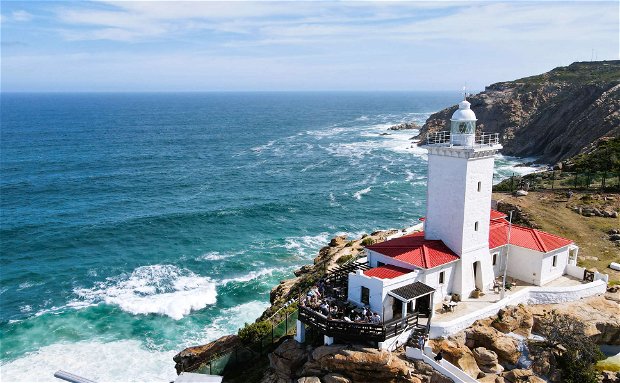
In Winter (June – August) the average temperature in Mossel Bay is 18° C (high) and 7°C (low). For a town where outdoor activities are the main attractions, most people are discouraged to visit, until you really get to know Mossel Bay and all it's hidden gems and indoor activities on offer, making a Winter breakaway sound good right about now.
The peninsula of Mossel Bay lies at a unique confluence between the warm Indian Ocean and the Outeniqua mountains creating a shallow bay where whales, sharks, seals, and dolphins frolic. The town boasts over 320 days of sunshine per year and receives most of its rainfall at night – allowing for maximum activity during the day, from surfing to whale and dolphin watching.
Like in most cities around the world, winter is low season in Mossel Bay (and most destinations), meaning you’ll have more of the town to yourself and won’t have to compete with hordes of travelers for entry to exhibits, endless traffic or long ques at restaurants. Not to mention the fact that accommodation and flights are cheaper than in peak season. Better yet, Winter is the time to save on plenty of specials and packages on offer, giving you more for less.
By the way, did you know that the magic really happens during Winter? This is Whale season and you only get to witness the bay being graced with the gentle giants of the ocean during Winter and Spring.
We have put together a list of 5 fun activities that will keep you busy during your Winter Mossel Bay break:
1. Romonza boat based Whale watching
The Romonza is the ONLY registered passenger boat along the South African Coast to take up to 50 passengers to observe the largest mammals on earth close up. A special qualified whale guide will be on board during every trip. Includes a free ticket for a trip around Seal Island with 4000 seals with a comfortable departure – from the Mossel Bay Harbour.
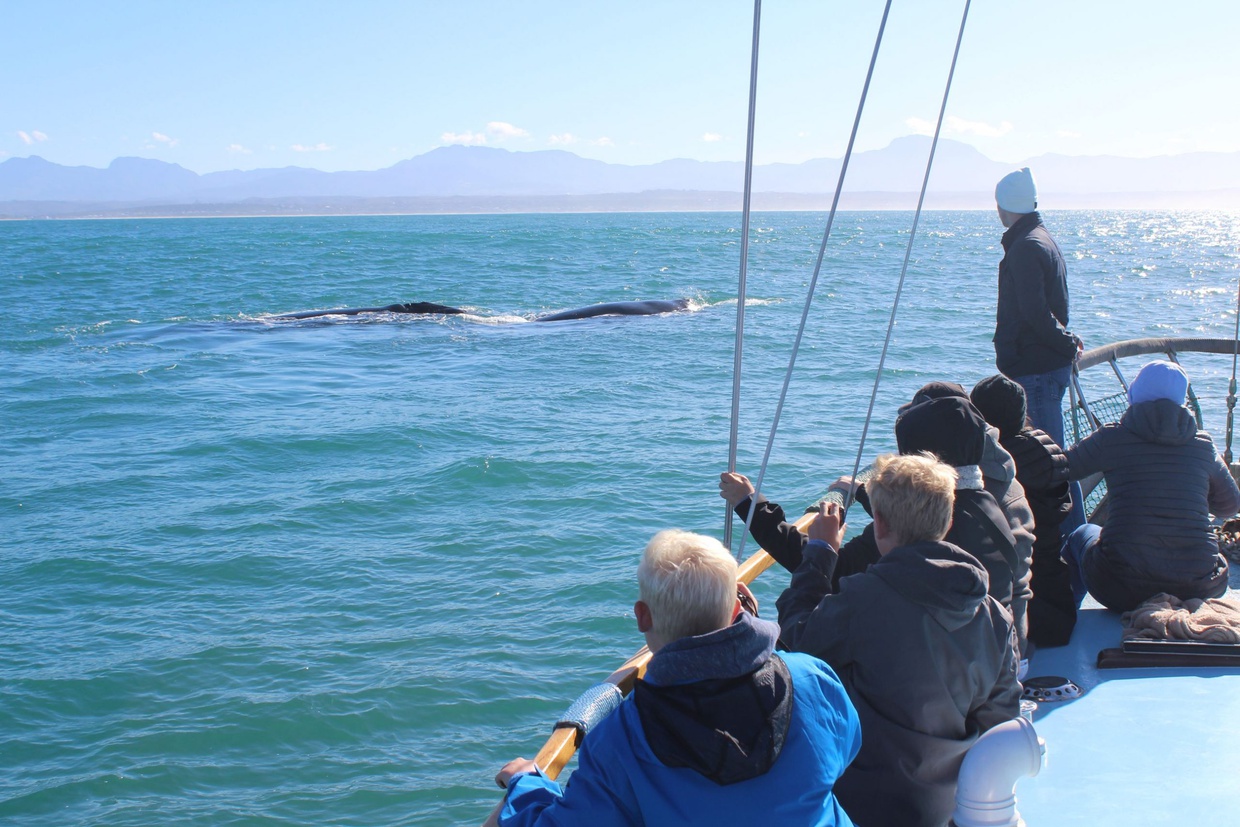
2. Bartholomew Diaz Museum Complex
Bartolomeu Dias was a Portuguese explorer who landed close to the site of the current Dias Museum Complex. He was the first European to sail around the southernmost tip of Africa in 1488, before, setting up the route from Europe to Asia later on. He named Mossel Bay “Angra dos Vaqueirosâ” (the Bay of Cowherds). At the Bartolomeu Dias Museum Complex, you can learn about his life, adventures and see some replicas of his ship.
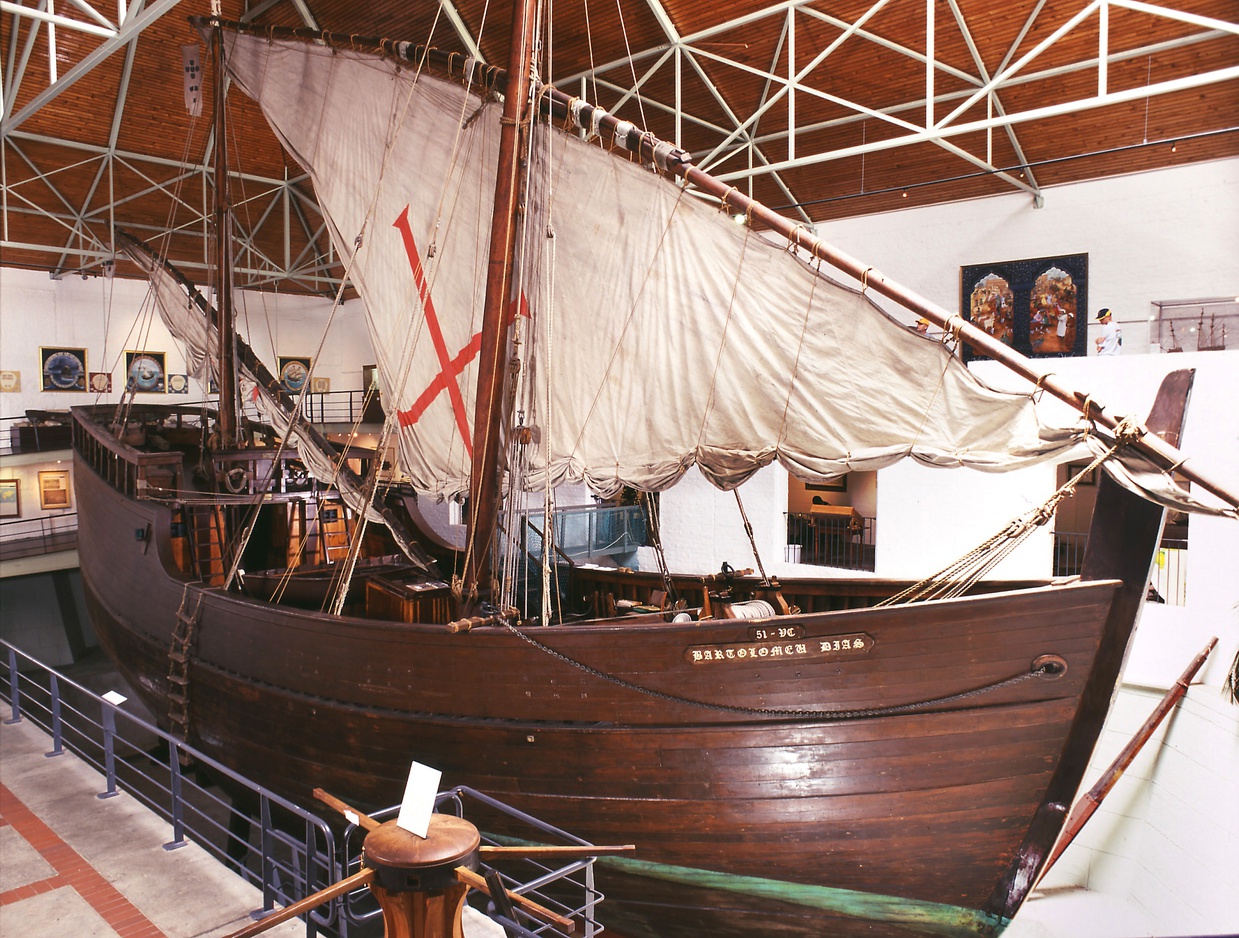 The Bartholomew Dias Ship replica
The Bartholomew Dias Ship replica
The ancient milkwood tree at the Museum is believed to be the country’s very first mailbox. It was first used as a post box in 1500 by a Portuguese sea captain named Pêro de Ataíde lost much of his fleet in a storm off the Southern Cape. Before returning to India, he wrote a message reporting the damage and warning of rough waters and he tucked the message in a boot dangling from a milkwood tree near a spring where sailors often drew water. Miraculously, the message was retrieved by its intended recipient, Joao de Nova, the very next year.
Today a large post office box shaped like a giant boot has been constructed beneath the tree, where people can send letters anywhere in the world and receive a special stamp.
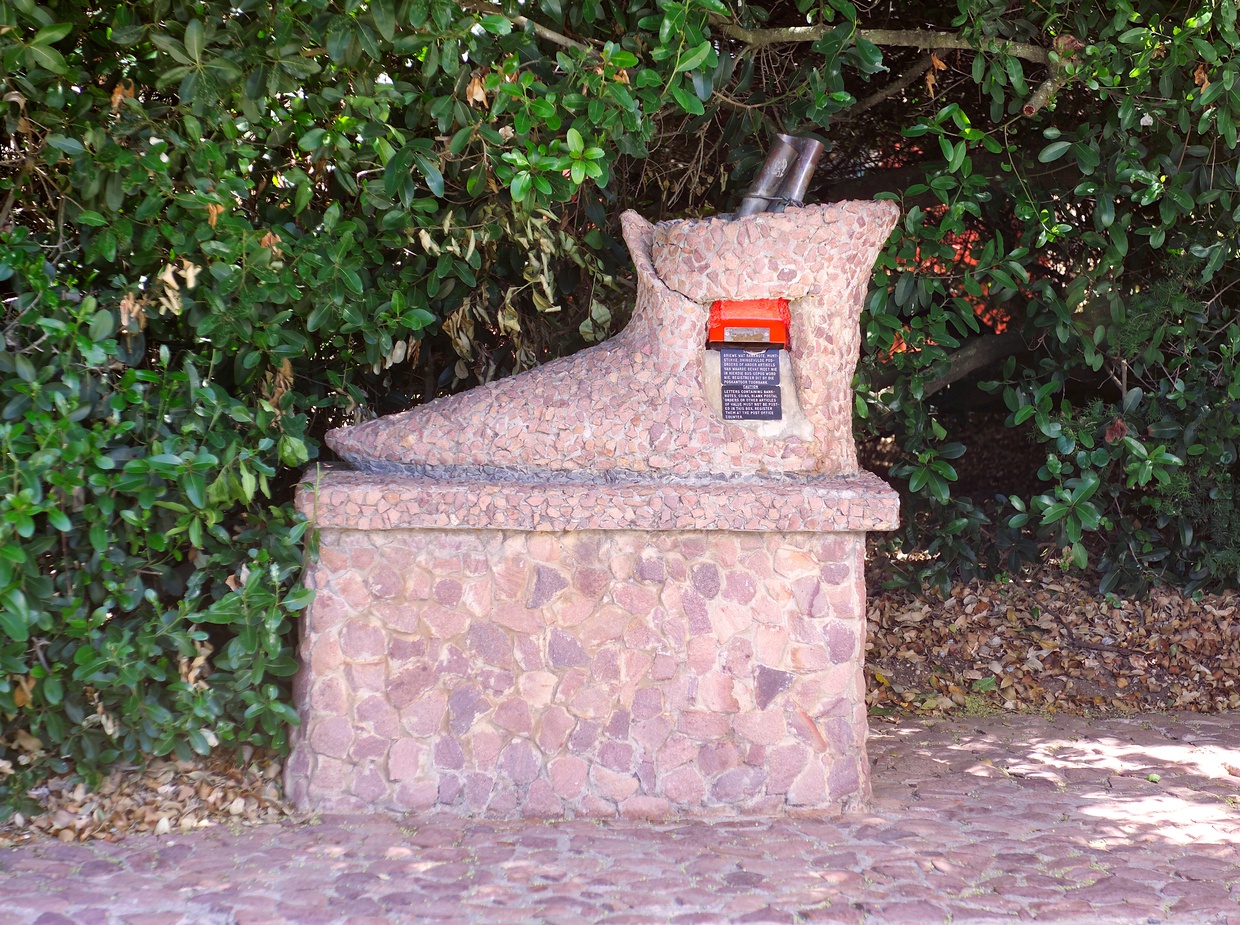 The Post shoe
The Post shoe
3. The Cape St. Blaize Lighthouse
The 19th-century Cape St. Blaize Lighthouse is a circular cast-iron towner painted in white. Its southern shores are lined with awesome cliffs that loom above the thundering surf below and the relentless force of the elements has cut out massive caverns. Ancient Khoi found shelter in the Cape St. Blaize Cave and an archaeological dig revealed that early dwellers of the cave might have largely survived on the abundant shellfish. The lighthouse was erected in 1864 and until recently, it was one of the only two lighthouses manned 24 hours daily on the South African Coastline.
You can also enjoy a bite to eat at the quaint restaurant at the lighthouse. Step into the light at Cape Saint Blaize Restaurant, where dining meets adventure and history. Guests have the opportunity to climb up into the lighthouse tower and experience the beautiful ocean views from the top, while also learning about the rich history of the lighthouse and its role in guiding ships safely to shore.
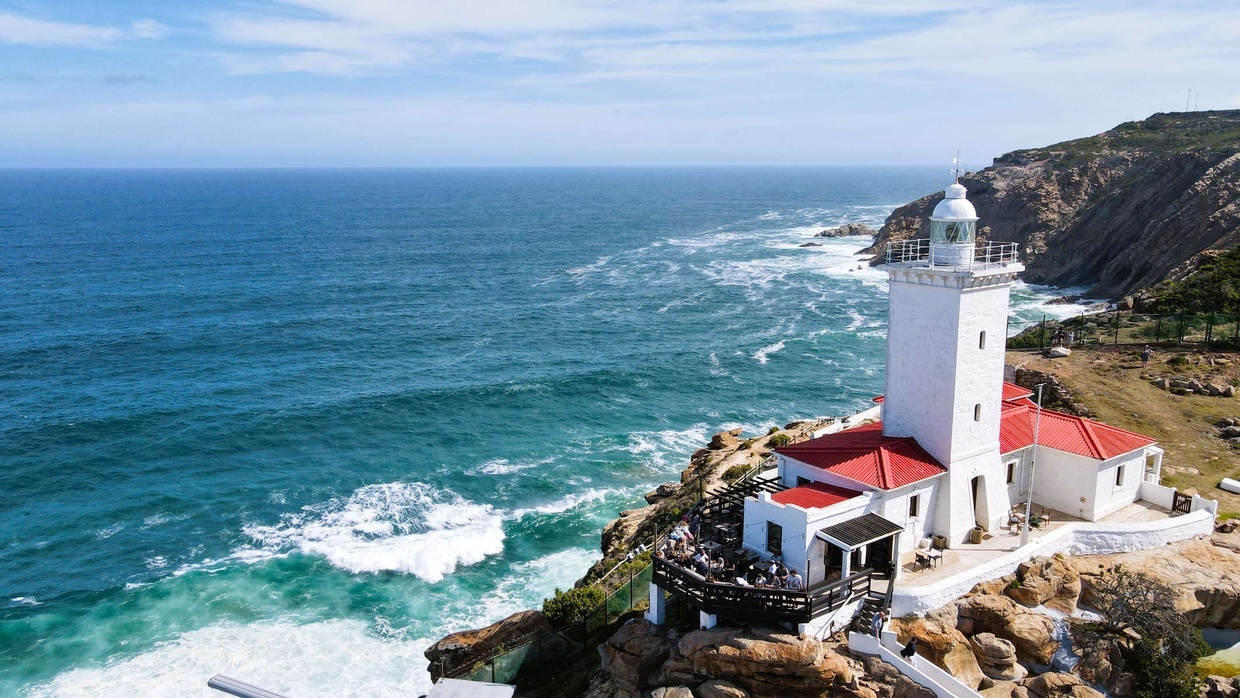
4. The Diaz Express
The Diaz Express has routes on the existing Transnet rail network in the Garden Route region of South Africa. The train between George and the seaside resort of Mossel Bay. The train offers unsurpassed scenery, history, visits to quaint crafts shops and art galleries with gastronomic experiences.
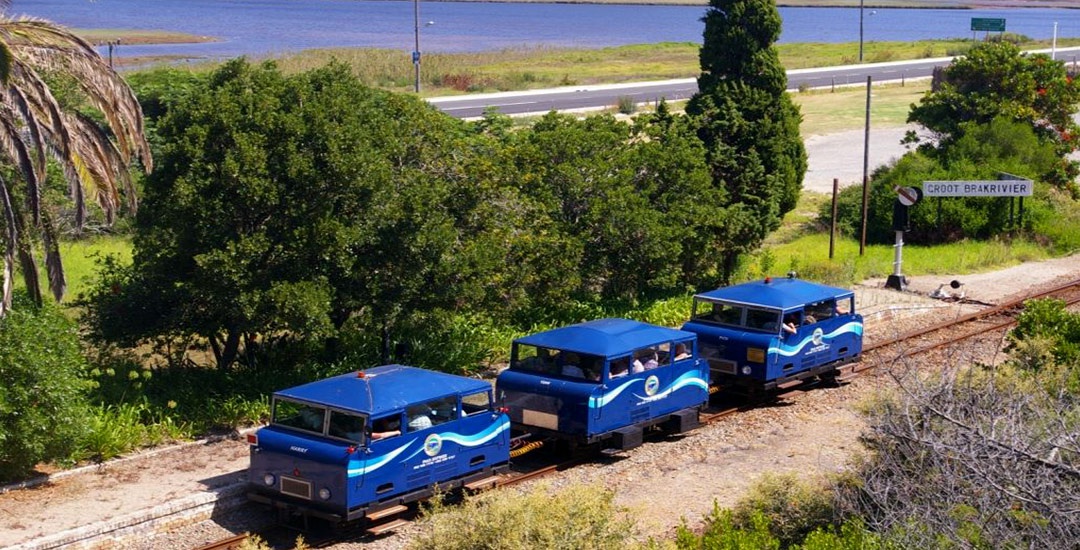 The Diaz Express passing through Great Brak River
The Diaz Express passing through Great Brak River
5. ATKV Hartenbos heated indoor pool
Come rain or shine, what is a seaside holiday without some sort of water fun? The heated indoor pool at the ATKV Hartenbos is a familiar family-favourite activity during the colder months. With it's temperature ranging between 30 – 35°C, makes it perfect for those slightly days. Enjoy the sea view while you are making use of the pool and spend the day relaxing with friends and family.

Further Reading
Latin Name: Damaliscus pygargus The Bontebok is a medium-sized, generally dark brown antelope with a prominent, wide white blaze on its face, with a pure white rump, belly and hocks, and black-tipped tail. Both sexes have horns, although the horns of rams are heavier and longer than those of ewes.
Latin Name: Kobus ellipsiprymnus Hence their name, waterbuck tend to hang around areas where there is a lot of water, especially being water dependent animals. Bulls (males) in particular, will hold a territory where there is an abundant amount of water and food to attract females – he will only hold this territory in breeding seasons.



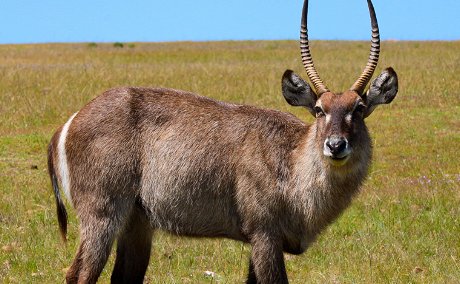
Share This Post